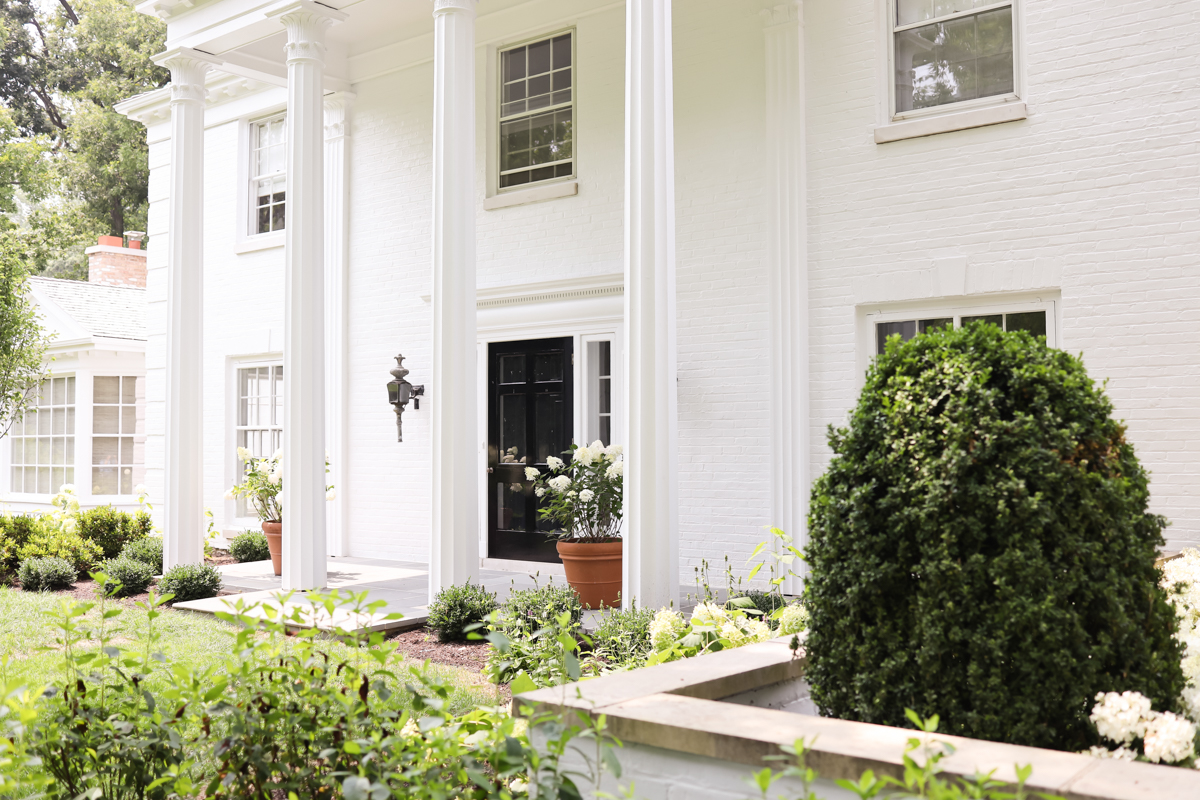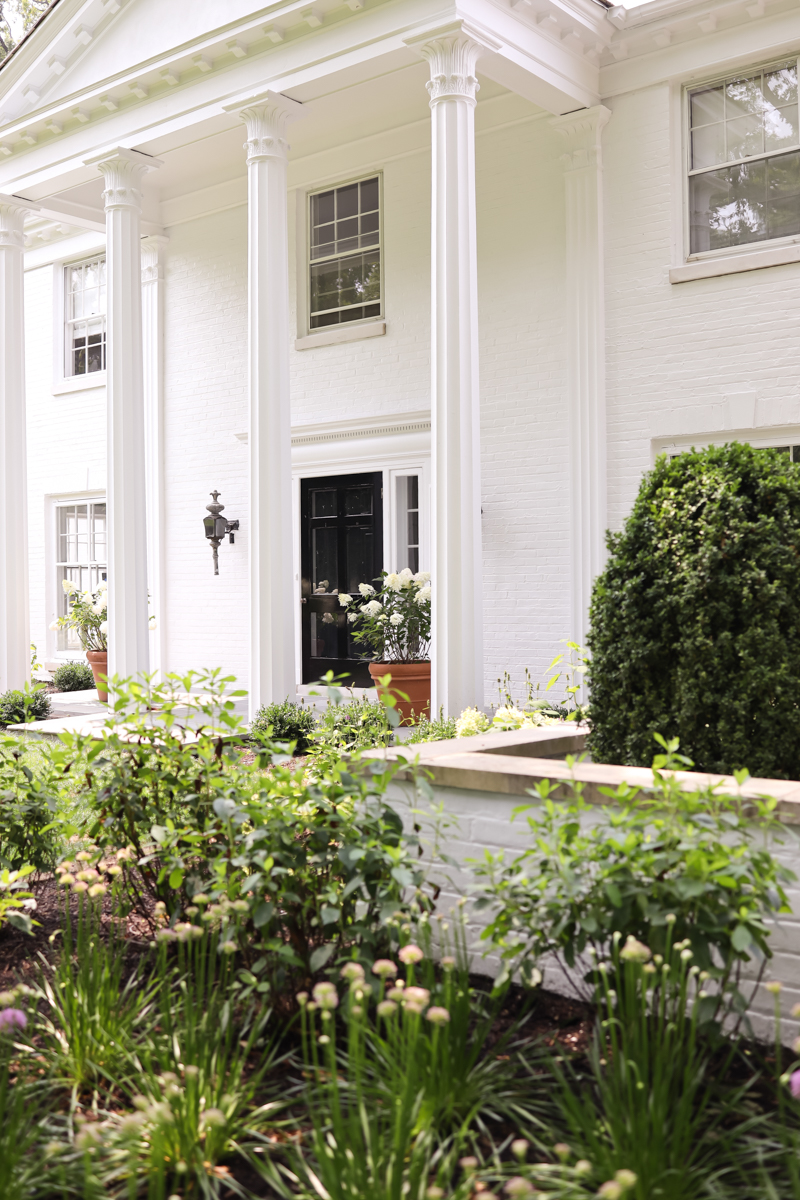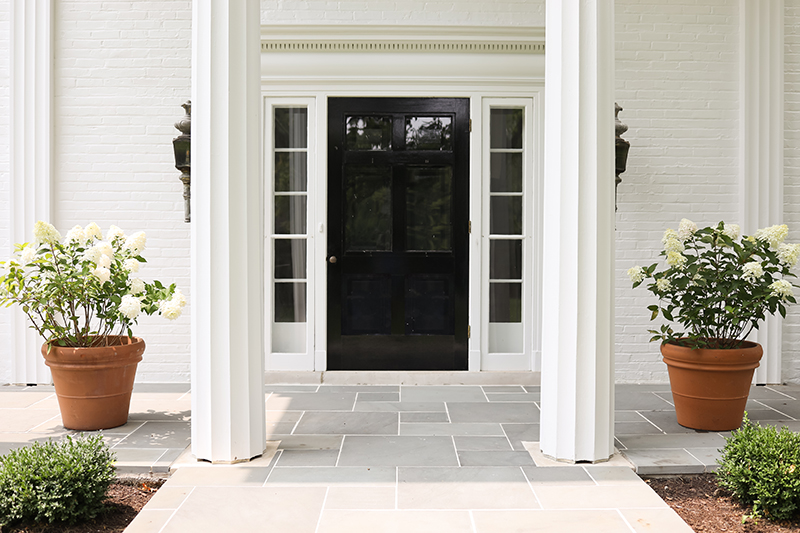My Home
How to Keep the Deer from Eating Plants in Your Garden


One of my favorite things about our home is that we get to see a handful of deer almost every single day. The sight of a deer gets me every single time, and when the babies start to appear in the spring, it’s nothing short of magical. I grew up going to Yosemite every summer and have always been fascinated by these graceful creatures. They are just so beautiful. I love having deer in our yard, but I don’t want the deer eating all my flowers and plants.
To some, deer might be seen as a negative because deer damage flowers and shrubs. But we were determined to have a beautiful garden that would be able to coexist with the deer. One that we could enjoy and that wouldn’t require too much effort to maintain. There are few things more peaceful than sitting on our patio, surrounded by flowers and trees, watching deer walk across the yard. This guide will share best ways to keep deer from eating the flowers and outdoor plants in your garden.
How to Keep the Deer from Eating Plants in Your Garden
As beautiful as deer are, their presence in your garden can result in a lot of damage, leaving you with chewed leaves, stripped bark, and torn up flower beds. I wanted to keep hungry deer away from our flower beds and young plants in the most safe, natural, and non-invasive way. Preventing deer from destroying your garden requires a combination of different methods, and we’ve tried a few. I’m going to share exactly what worked for us, and what didn’t, along with some other ideas that might be better for your home and garden.
Keeping Deer Out of Your Garden
Before diving into the methods of keeping deer away, we need to understand deer behavior. They are herbivores that feed primarily on vegetation, including leaves, twigs, fruits, nuts, and various plants. Deer are most active at dawn and dusk, and their feeding patterns can vary with the seasons and availability of food.
To be clear, I love having dear in our yard, but do not want them to eat the flowers in our garden. And I’d love a vegetable garden at some point, but would likely enclose that. Even with all these measures in place, it’s important to regularly inspect your garden for signs of deer activity and take action promptly if you notice any damage.
Deer Resistant Plants
When we landscaped our home last year, we did a lot of research on deer resistant plants. These are a great option, although I don’t love a lot of deer-proof plants. I had a certain aesthetic I was going for, and I was really married to the idea of a white garden. yes, I love colorful flowers, too. We added in some pink peonies, but I had a vision.
I love peonies, lavender, boxwoods, and lilacs, and those are all deer-proof. Flowering trees are another great option to bring flowers into your garden since the deer can’t reach them. We love hydrangea but deer eat them, and we planted them anyway. We have successfully figured out how to keep them safe from deer. A great way to keep deer away from flowers is to plant them close to the house. This, combined with repellant sprays, has kept them safe from the deer.
I will admit that I’m a little sad that I can’t plant tulips – I think they’d destroy them. But I took a chance on hydrangea since they grow to be fairly large plants and can be planted closer to the house. I’m going to share some options for physical barriers, repellent sprays, deer-resistant plants, and smart landscaping techniques.
Repellant Sprays
Deer have a very strong sense of smell. We have had the best results with this natural deer repellent spray in this garden pump. My husband sprays this on the plants and flowers surrounding our home, and it has been the most effective way to keep deer away from our flowers. It emits a strong scent that deer find offensive, but doesn’t smell bad to us at all. Common ingredients include rotten eggs, garlic, blood meal, and predator urine (like fox or coyote urine). Ok, this sounds absolutely disgusting, but it’s masked with mint, so it smells nice and fresh to human beings. The strong odors only offend the deer and not us.
Repellents need to be reapplied regularly, especially after rain or irrigation. Change the type of repellent periodically to prevent deer from becoming accustomed to one scent or taste. Ensure thorough coverage of the plants, including new growth.
Fencing
A tell fence is the best option to keep deer out, but we love having deer in our yard, so this didn’t feel like a good idea for us. Stone walls are a great option, too. We have lots of hydrangea on our patio, which is surrounded by a small stone wall, and the deer have never entered this area. A standard fence needs to be at least 8 feet high to deter deer effectively. Here are some types of fences to consider:
Solid Wooden or Vinyl Fences:
These provide a visual barrier as well as a physical one. Deer are less likely to jump over something they cannot see through.
Wire Mesh or Woven Wire Fences:
These are cost-effective and can be used to enclose larger areas. Ensure the mesh is small enough that deer cannot stick their heads through.
Netting
Plastic netting can be used to cover individual plants or entire garden beds. Lightweight and nearly invisible, netting can protect plants without detracting from the garden’s appearance. Ensure the netting is secured tightly to prevent deer from pushing it aside.
What Didn’t Work for Us
We did a lot of research and tried Irish Spring soap bars, which have a strong scent that’s not offensive to people, but deer don’t like it. We didn’t have any issues with the deer, but smaller animals just tore the bags containing the Irish Spring open. Physical barriers like fences weren’t a great option because we didn’t want to fence our flower beds in, and we love deer.
Plant Placement and Landscaping Techniques
Designing a garden to deter deer involves strategic plant placement and the integration of deer-resistant plants. By thoughtfully planning your garden layout, you can create natural barriers and make your space less appealing to these persistent browsers. This approach not only helps protect your plants but also enhances the aesthetic appeal of your garden. Here’s a detailed guide on how to design your garden with deer deterrence in mind.
Perimeter Planting
Perimeter planting is an effective and eco-friendly strategy to keep deer away from gardens and crops. Plant more deer-resistant species along the edges of your garden and the more desirable plants closer to your home. This method creates a barrier of plants that deer typically avoid, discouraging them from entering the protected area. Creating thick plantings of deer-resistant plants can create a barrier that deer are less likely to penetrate.
Common choices for perimeter planting include herbs like rosemary, lavender, and sage, which have aromas that deer find unpleasant. Ornamental grasses such as switchgrass and blue fescue are also effective, offering a physical barrier and unpalatable foliage.
Dense Plants
Create dense plantings of deer-resistant plants. Deer are less likely to push through thick foliage, which can act as a deterrent. Include a variety of plant heights. Taller, more robust plants can act as physical barriers, while lower, dense ground covers can prevent deer from easily walking through.
To maximize effectiveness, it’s important to plant these deterrents densely and continuously around the garden’s boundary, creating a thick, unbroken line that deer are less likely to breach.
Create Levels
Deer prefer flat ground and are less likely to navigate terraces or steep slopes. Incorporating these elements into your garden design can make it less attractive to deer. My neighbor uses elevated planters, and has had a lot of luck with those. I feel like the deer would get in there anyway, but she said it’s worked very well for her.
Hardscaping
Incorporate elements like stone walls, patios, and pathways to break up planting areas and create physical barriers that deer may not cross. Mix deer-resistant plants with more vulnerable ones to confuse deer and protect desirable plants. Combine aromatic plants with your garden to create a scent barrier that deer are less likely to cross.
Motion-Activated Devices
Motion-Activated Sprinklers:
These devices detect movement and release a burst of water, scaring deer away. We did not do this, but it seems like it would be a good option.
Ultrasonic Devices:
These emit a high-pitched sound when motion is detected. The sound is usually inaudible to humans but can be annoying to deer and other wildlife.
Lights and Sounds:
Motion sensor lights or radios can also deter deer. Sudden changes in light or noise can startle deer and make them wary of entering the area. We do have lights near the house, and that, combined with other methods, seems to work for us.
Sustainable and Ethical Practices
It’s important to consider sustainable and ethical practices. Choose repellents that are safe for the environment, pets, and humans. Avoid using harmful chemicals that can damage the ecosystem. Focus on deterrents that do not harm the deer. The goal is to protect your garden while coexisting peacefully with wildlife. Recognize that habitat loss and fragmentation can increase deer pressure on gardens. Support local conservation efforts to preserve natural habitats for wildlife.
Maintaining your Garden
Walk around your garden frequently to check for signs of deer. Look for footprints, droppings, or damaged plants. Deer feeding patterns change with the seasons. In winter, when food is scarce, they may be more persistent. Adjust your deterrents accordingly, such as increasing the frequency of repellent applications. Weather can affect the effectiveness of some deterrents, particularly repellents. Reapply them after heavy rain or snow.
Deer Resistant Plants and Flowers
Here’s a comprehensive list of deer-resistant plants and flowers that you can incorporate into your garden to help deter deer from feasting on your greenery:
Here are the Flowers in our Garden
Limelight hydrangea
Little lime hydrangea
Incrediball hydrangea
Peonies
Knockout roses
Green gem boxwoods
Lavender
Lilacs
Deer-Resistant Perennials
Achillea (Yarrow)
Agastache (Hyssop)
Ajuga (Bugleweed)
Alchemilla (Lady’s Mantle)
Artemisia (Wormwood)
Asclepias (Milkweed)
Astilbe (False Goat’s Beard)
Baptisia (False Indigo)
Bergenia (Pigsqueak)
Brunnera (Siberian Bugloss)
Centaurea (Bachelor’s Button)
Coreopsis (Tickseed)
Dianthus (Pinks)
Dicentra (Bleeding Heart)
Digitalis (Foxglove)
Echinacea (Coneflower)
Euphorbia (Spurge)
Gaillardia (Blanket Flower)
Geranium (Cranesbill)
Heuchera (Coral Bells)
Iris (Bearded Iris)
Lavandula (Lavender)
Liatris (Blazing Star)
Lupinus (Lupine)
Monarda (Bee Balm)
Nepeta (Catmint)
Peonies
Papaver (Poppy)
Perovskia (Russian Sage)
Rudbeckia (Black-eyed Susan)
Salvia (Sage)
Sedum (Stonecrop)
Stachys (Lamb’s Ear)
Veronica (Speedwell)
Deer-Resistant Annuals
Ageratum (Floss Flower)
Antirrhinum (Snapdragon)
Calendula (Pot Marigold)
Cleome (Spider Flower)
Heliotropium (Heliotrope)
Impatiens balsamina (Balsam)
Lobelia (Cardinal Flower)
Marigold (Tagetes)
Nicotiana (Flowering Tobacco)
Salvia splendens (Scarlet Sage)
Zinnia
Deer-Resistant Shrubs
Berberis (Barberry)
Buddleia (Butterfly Bush)
Buxus (Boxwood)
Caryopteris (Bluebeard)
Ceanothus (California Lilac)
Chaenomeles (Flowering Quince)
Cornus (Dogwood)
Cotinus (Smoke Bush)
Cotoneaster
Elaeagnus (Silverberry)
Forsythia
Ilex (Holly)
Juniperus (Juniper)
Ligustrum (Privet)
Mahonia (Oregon Grape)
Philadelphus (Mock Orange)
Potentilla (Cinquefoil)
Rhus (Sumac)
Rosa rugosa (Rugosa Rose)
Spiraea (Spirea)
Syringa (Lilac)
Viburnum
Deer-Resistant Bulbs
Allium (Ornamental Onion)
Colchicum (Autumn Crocus)
Crocus
Daffodil (Narcissus)
Eranthis (Winter Aconite)
Fritillaria
Galanthus (Snowdrop)
Hyacinth
Leucojum (Snowflake)
Muscari (Grape Hyacinth)
Scilla (Squill)
Trillium (Wake Robin)
Deer-Resistant Herbs
Lavandula (Lavender)
Rosmarinus (Rosemary)
Salvia officinalis (Sage)
Thymus (Thyme)
Origanum (Oregano)
Mentha (Mint)
Melissa officinalis (Lemon Balm)
Artemisia (Wormwood)
Deer-Resistant Grasses and Ground Covers
Carex (Sedge)
Festuca (Fescue)
Helictotrichon (Blue Oat Grass)
Liriope (Lilyturf)
Pachysandra
Santolina (Lavender Cotton)
Vinca (Periwinkle)
Deer-Resistant Vines
Campsis (Trumpet Vine)
Clematis
Lonicera (Honeysuckle)
Wisteria
The Most Effective Method for Keeping Deer Out of Our Garden
We found an effective solution by combining physical barriers, repellents, deer-resistant plants, and smart landscaping techniques. With those options, we’ve had great success keeping our garden safe from the deer. It is absolutely possible to create a beautiful garden that coexists with the surrounding wildlife. Good luck!
This post contains affiliate links, and if you purchase something using my links, I may earn a commission at no cost to you.






